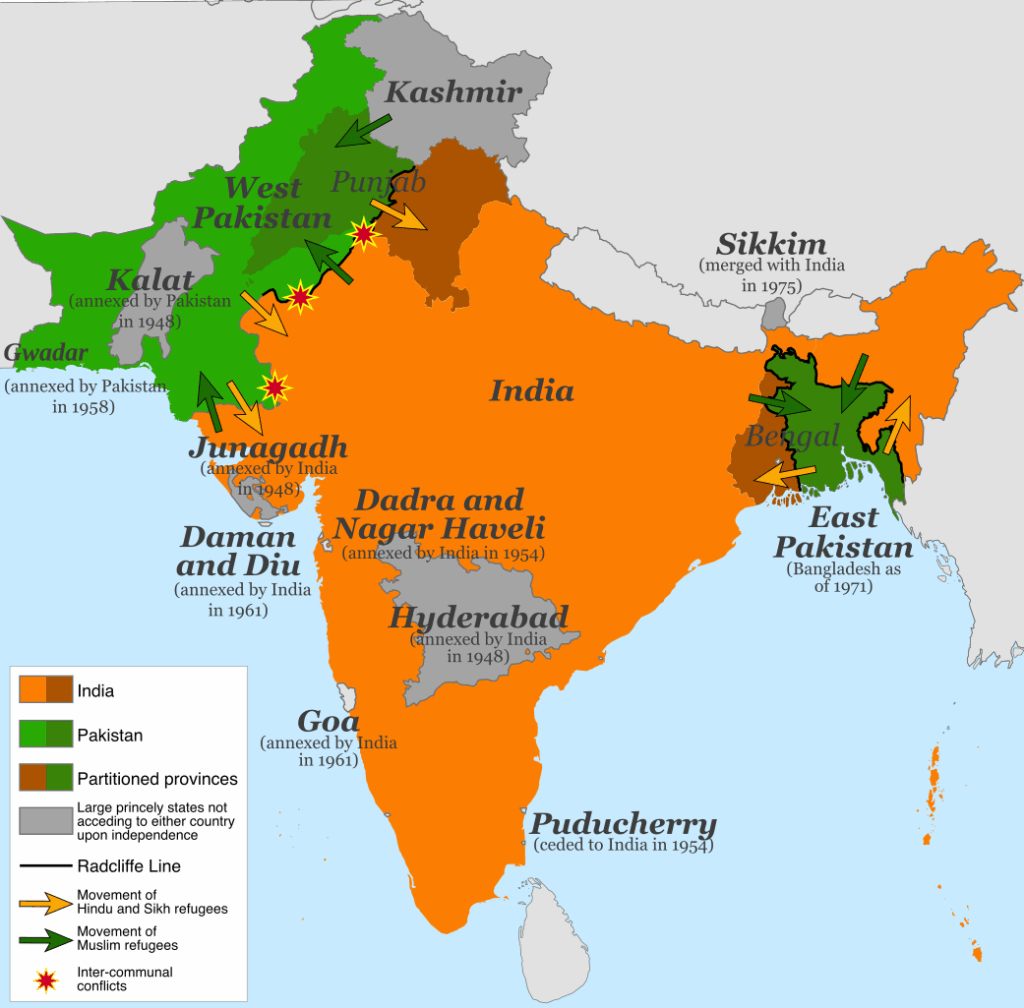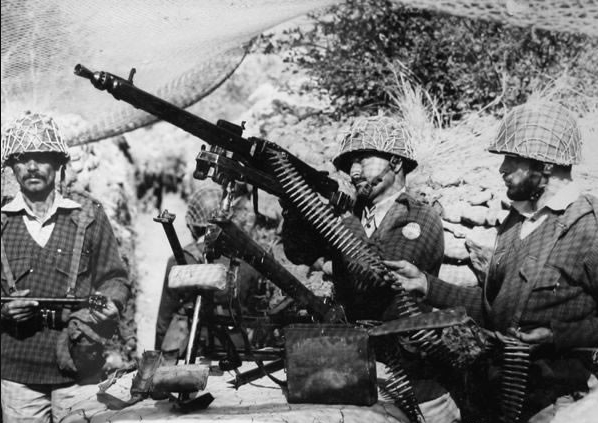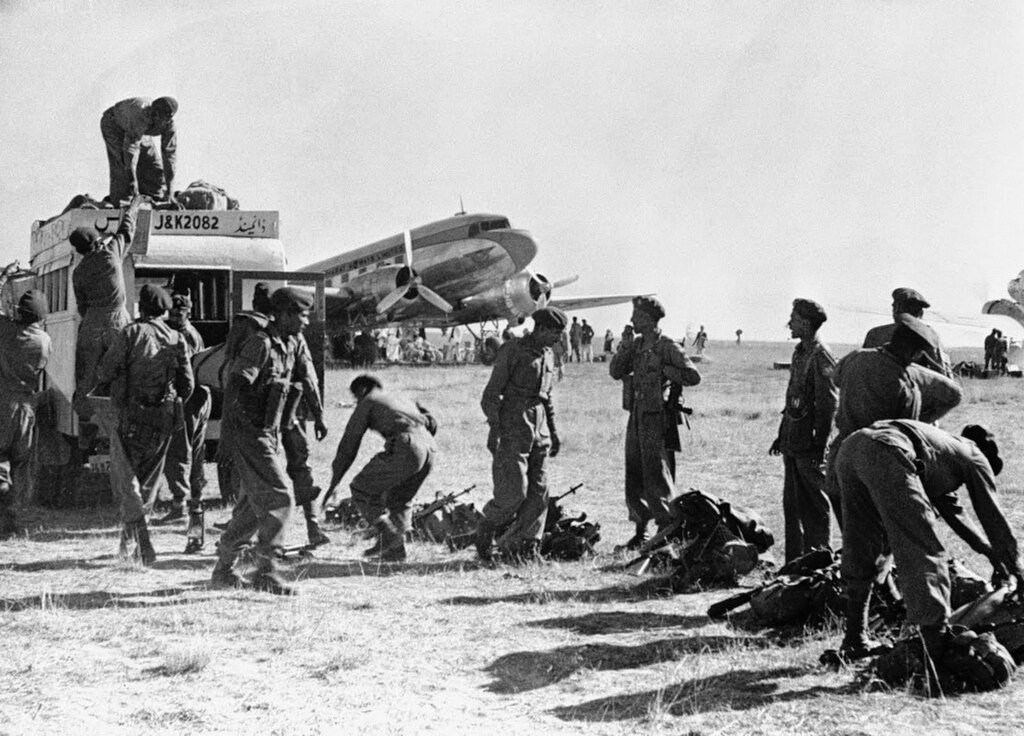The India-Pakistan conflict is a saga of partition, power, and perpetual tension-a narrative that has shaped South Asia for more than seven decades. From the blood-soaked lines of 1947 to the missile-laden skies of 2025, this rivalry has evolved into one of the world’s most dangerous and complex standoffs. Recent events, such as India’s unprecedented suspension of the Indus Waters Treaty and the deadliest military exchanges in decades, have only heightened the stakes for both nations and the world at large. Let’s journey through the history, flashpoints, and future prospects of this enduring conflict.
Partition of India: The origin of discord
The conflict’s roots lie in the traumatic partition of British India in 1947. The hastily drawn Radcliffe Line split the subcontinent into Hindu-majority India and Muslim-majority Pakistan, triggering the largest mass migration in history. Up to 20 million people were uprooted, and estimates of the death toll range from 200,000 to 2 million. The violence and displacement left scars that still shape both societies.

Kashmir conflict: The heart of the rivalry
The accession and first war
Kashmir, a princely state with a Muslim majority but a Hindu ruler, became the epicentre of Indo-Pakistani rivalry. Maharaja Hari Singh’s decision to accede to India in exchange for military protection against Pakistani-backed tribal invaders sparked the First Indo-Pakistani War (1947-48). The war ended with a UN-brokered ceasefire and the creation of the Line of Control (LoC), leaving Kashmir divided and heavily militarised.
Persistent insurgency and proxy war
Since the late 1980s, Kashmir has witnessed a persistent insurgency, with India accusing Pakistan’s Inter-Services Intelligence (ISI) of supporting militant groups. Over 300,000 Indian troops are deployed in the region, and the human cost has been staggering: estimates suggest more than 70,000 deaths in Kashmir since 1989, with thousands more missing or displaced.
India-Pakistan wars: From conventional battles to modern skirmishes
1965 and 1971 wars
The 1965 war, sparked by border clashes and Pakistan’s Operation Gibraltar in Kashmir, resulted in thousands of casualties and ended with the Tashkent Declaration. The 1971 war, however, was transformative: India’s intervention in East Pakistan led to the creation of Bangladesh and the surrender of over 90,000 Pakistani troops.

The Kargil war (1999)
The Kargil conflict marked the first armed clash between the two nuclear-armed states. Pakistani forces and Kashmiri militants occupied strategic heights in Indian Kashmir, prompting a fierce Indian military response. The conflict ended with Pakistan’s withdrawal under international pressure, but not before over 1,000 soldiers on both sides lost their lives.
2025: The deadliest standoff in decades
In April 2025, a terrorist attack in Pahalgam, Kashmir, killed 26 tourists and reignited tensions. India responded with “Operation Sindoor,” launching missile and air strikes on nine locations in Pakistan and Pakistan-administered Kashmir-marking the most intense fighting in over 20 years. Pakistan claims at least 31 civilians were killed, including children, and asserts it shot down five Indian jets (a claim India denies). Both sides have suffered civilian casualties: 31 in Pakistan and 16 in India, with hundreds injured and thousands displaced as border communities evacuate.
Indus Waters Treaty: Water as a weapon
Treaty background and suspension
The 1960 Indus Waters Treaty (IWT), brokered by the World Bank, survived wars and political upheaval for over 60 years. It divided the Indus basin’s rivers, granting India rights over the eastern rivers (Ravi, Beas, Sutlej) and Pakistan over the western rivers (Indus, Jhelum, Chenab). In April 2025, India suspended the treaty, citing Pakistan’s alleged support for terrorism and a refusal to renegotiate terms in light of climate change and new water demands. This is the first such suspension since the treaty’s inception.
Impact and expert insights
Experts warn the suspension could devastate Pakistani agriculture and disrupt irrigation for millions of downstream farmers. While India lacks the infrastructure to fully divert the western rivers, it can now withhold project information and build new storage facilities without Pakistani oversight. The World Bank, while able to appoint neutral arbitrators, lacks enforcement power, leaving the future of water sharing uncertain.
Nuclear standoff: Deterrence and danger
Both India and Pakistan possess roughly 170 nuclear warheads each, with extensive delivery systems including ballistic missiles, aircraft, and submarines. India maintains a “no first use” policy, though recent rhetoric has cast doubt on its permanence. Pakistan, by contrast, reserves the right to use nuclear weapons if its existence is threatened. The spectre of nuclear escalation looms over every military crisis, as even a “limited” exchange could result in catastrophic casualties.
Cross-border terrorism and asymmetric warfare
Since the 1971 war, Pakistan has increasingly relied on asymmetric tactics: supporting non-state actors, leveraging strategic alliances (notably with China), and maintaining nuclear deterrence. The April 2025 Pahalgam attack, attributed to The Resistance Front (an offshoot of Lashkar-e-Taiba), exemplifies this strategy. India’s response included not just military strikes, but also expelling Pakistani diplomats and suspending key treaties.
A CCTV capture shows lights after two explosions in Pakistan’s city of Gujranwala near the Indian border. pic.twitter.com/8aoKhl3AUo
— The Urban Herald (@theurbanherald) May 8, 2025
Diplomatic breakdown and human cost
Collapse of agreements
In retaliation for India’s actions, Pakistan suspended the 1972 Simla Agreement, expelled Indian diplomats, and shut down airspace and trade routes. Analysts describe this as the most serious breakdown in relations since the 1971 war, with both countries abandoning long-standing bilateral frameworks.
Humanitarian toll
The civilian suffering is immense. In the latest escalation alone, at least 47 civilians have died and over 100 have been wounded across both countries. Humanitarian organisations have condemned attacks on non-combatants, including the deadly strike on a mosque in Pakistan’s Punjab province that killed a three-year-old girl. Panic-buying, blackout drills, and mass evacuations have become the new normal for border communities.
The suspension of the Indus Waters Treaty and collapse of diplomatic channels mark a dangerous new phase-one where the human cost could spiral far beyond the borderlands.
Kashmir conflict and global power play
The Kashmir conflict remains central to both nations’ identities and ambitions. For India, control over Kashmir is tied to its regional leadership and national unity. Pakistan views the territory as unfinished business from partition and a symbol of its commitment to South Asian Muslims. External actors, especially China, play a subtle but significant role-sometimes acting as a stabiliser, at other times emboldening Pakistan through diplomatic and strategic support.
Nuclear deterrence and the risk of escalation
The 2025 crisis has exposed the limitations of nuclear deterrence in preventing conflict. While both sides have so far avoided all-out war, the risk of miscalculation remains high. Even limited strikes or misinterpreted signals could trigger a catastrophic escalation. Both nations have conducted blackout drills and mobilised their nuclear forces, with international leaders urging maximum restraint.
Current diplomatic efforts and international response
Despite the breakdown in direct dialogue, there are calls for Track-II diplomacy-unofficial, back-channel negotiations, often mediated by neutral states like Switzerland. The United Nations and World Bank have urged both countries to de-escalate and resume cooperation on water sharing and counterterrorism. The United States has offered to mediate, while the UN Secretary-General has called for “maximum military restraint,” underscoring the global stakes.

The human cost: Data and voices
- Casualties since 1947: Over 1 million killed or displaced during partition; at least 70,000 deaths in Kashmir since 1989.
- Recent escalation (2025): At least 47 civilians killed, over 100 wounded, and thousands displaced.
- Military deployments: Over 300,000 Indian troops stationed in Kashmir.
- Nuclear arsenals: Each side holds approximately 170 warheads.
- Water dependency: Over 80% of Pakistan’s agriculture relies on Indus basin irrigation, now threatened by treaty suspension.
Conclusion: A new, uncertain chapter
The India-Pakistan conflict has entered a perilous new phase. The suspension of the Indus Waters Treaty, the deadliest military exchanges in decades, and the collapse of diplomatic agreements mark a historic low in relations. The human cost is mounting, with civilians bearing the brunt of violence and uncertainty.
Yet, both nations have so far stopped short of all-out war-perhaps a testament to the sobering power of nuclear deterrence, or perhaps a sign that neither side is willing to risk total destruction. The future remains fraught: will India and Pakistan find an off-ramp, or are they destined for further escalation?
The world watches, hoping for wisdom to prevail over war. In the words of Sun Tzu, “The supreme art of war is to subdue the enemy without fighting.” For the sake of millions on both sides of the border, let’s hope that art is not forgotten in the fog of conflict.
What questions do you have about the India-Pakistan conflict, its human impact, or the prospects for peace? Join the conversation below.



